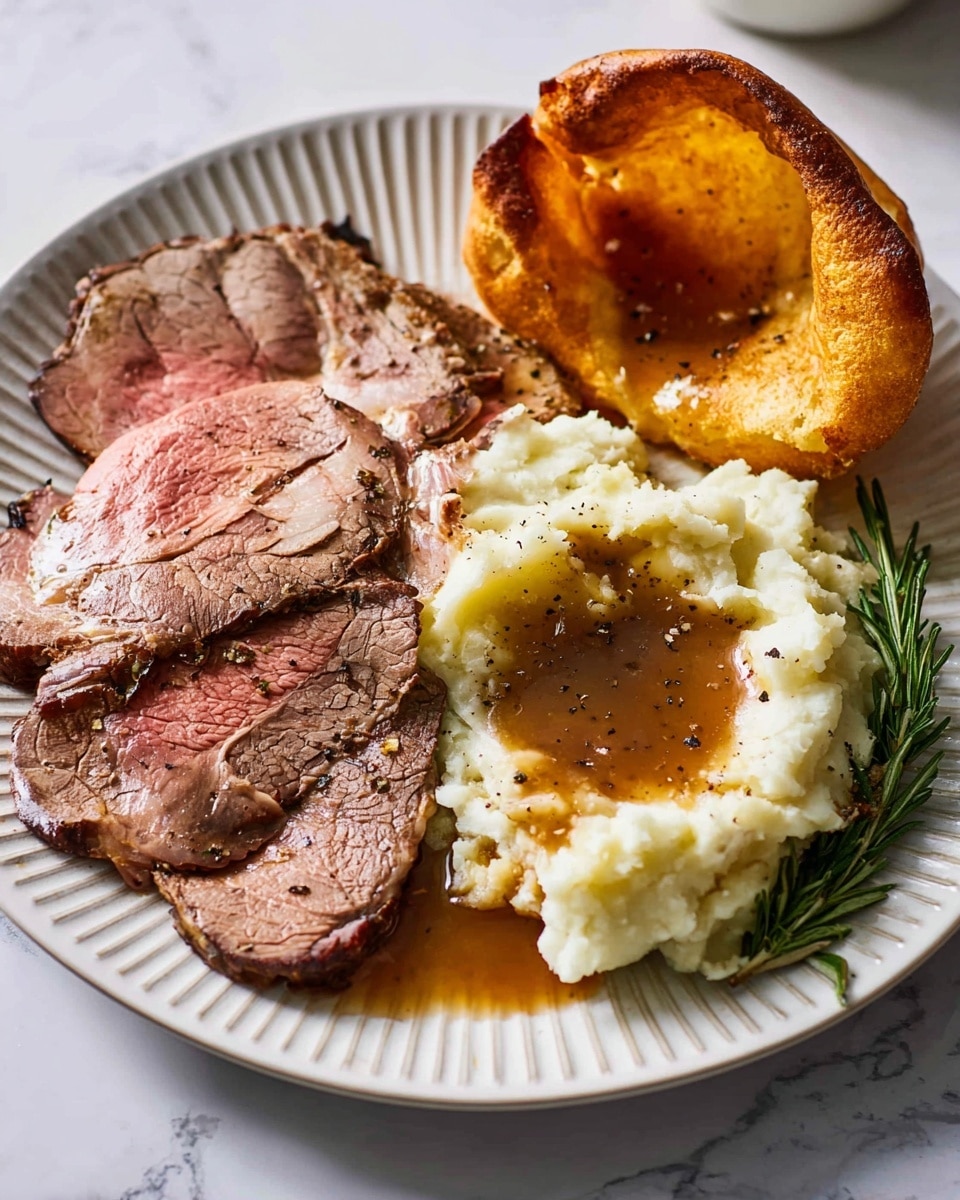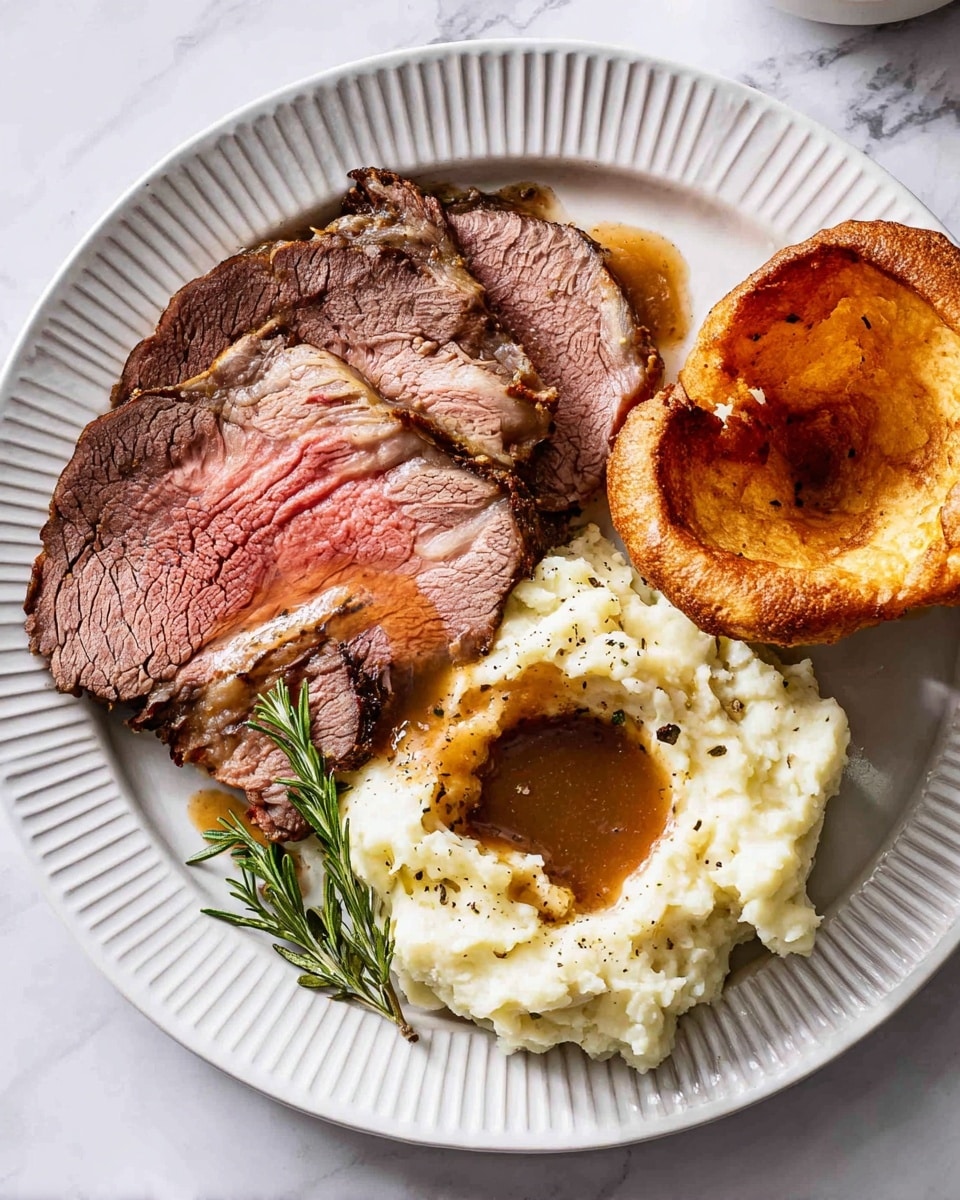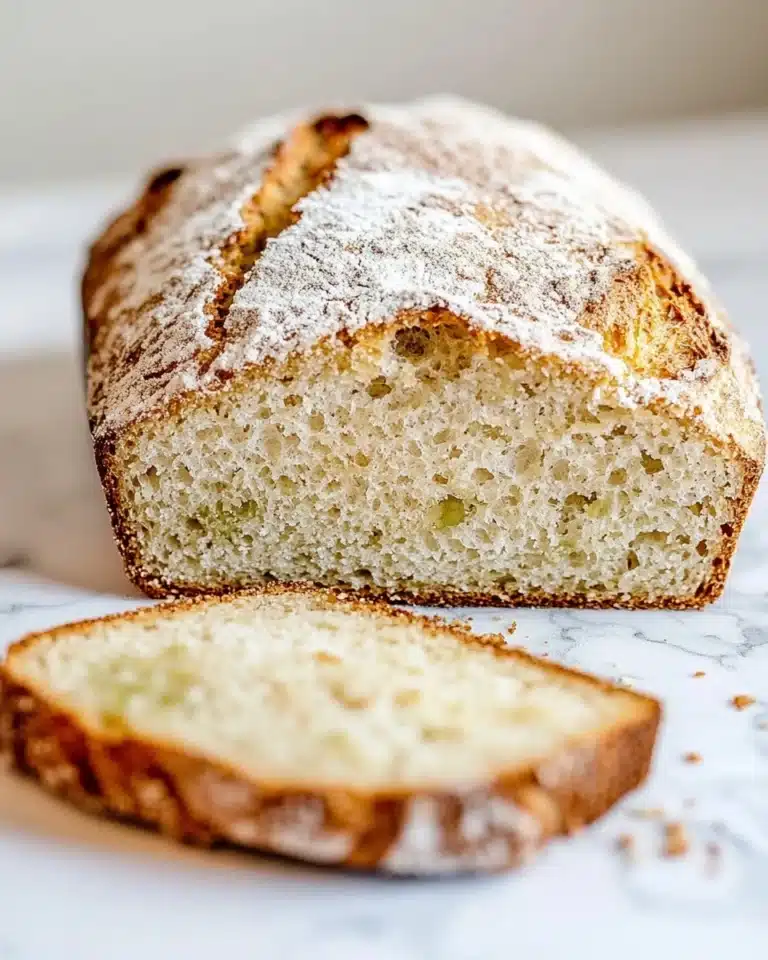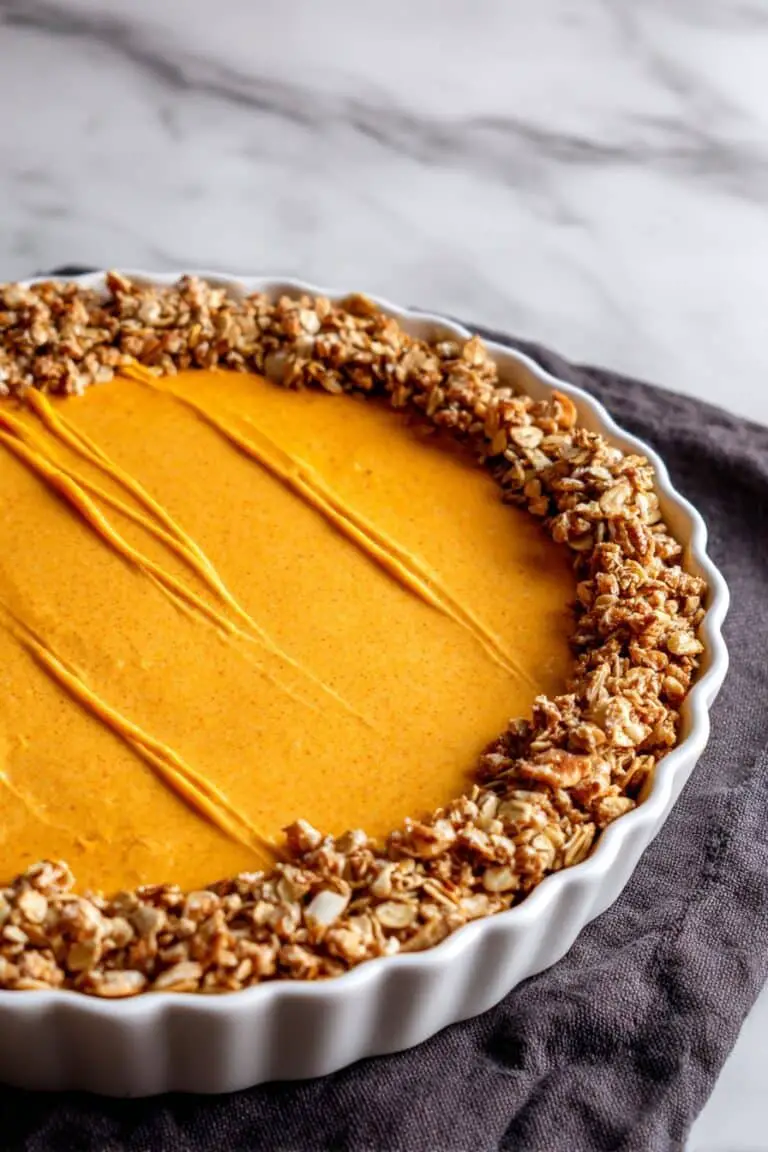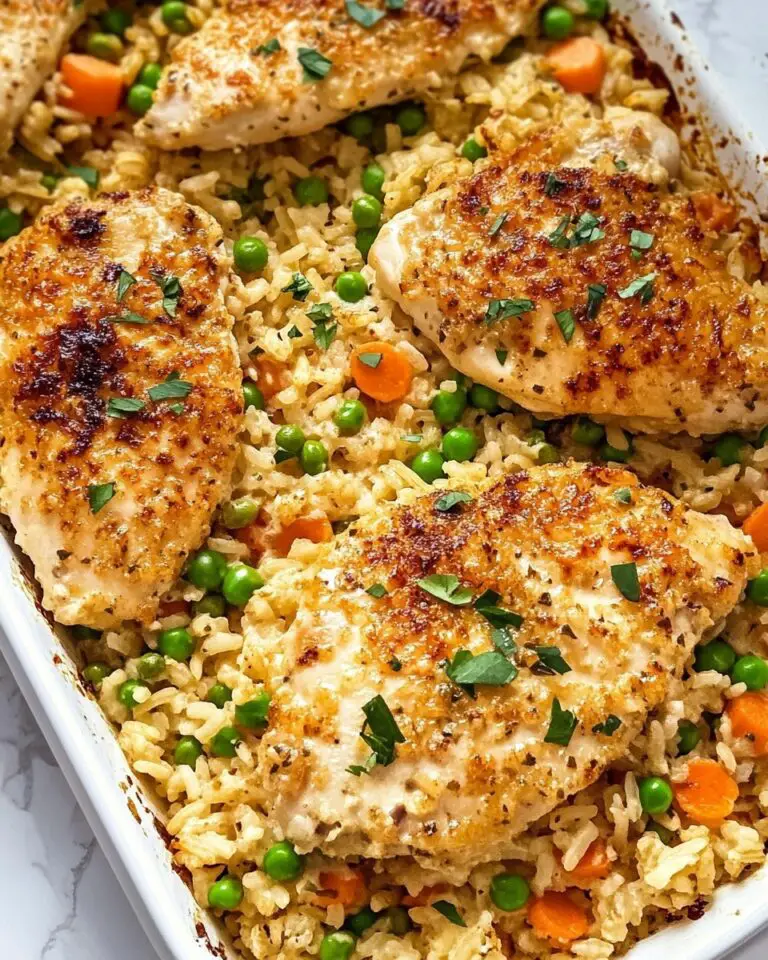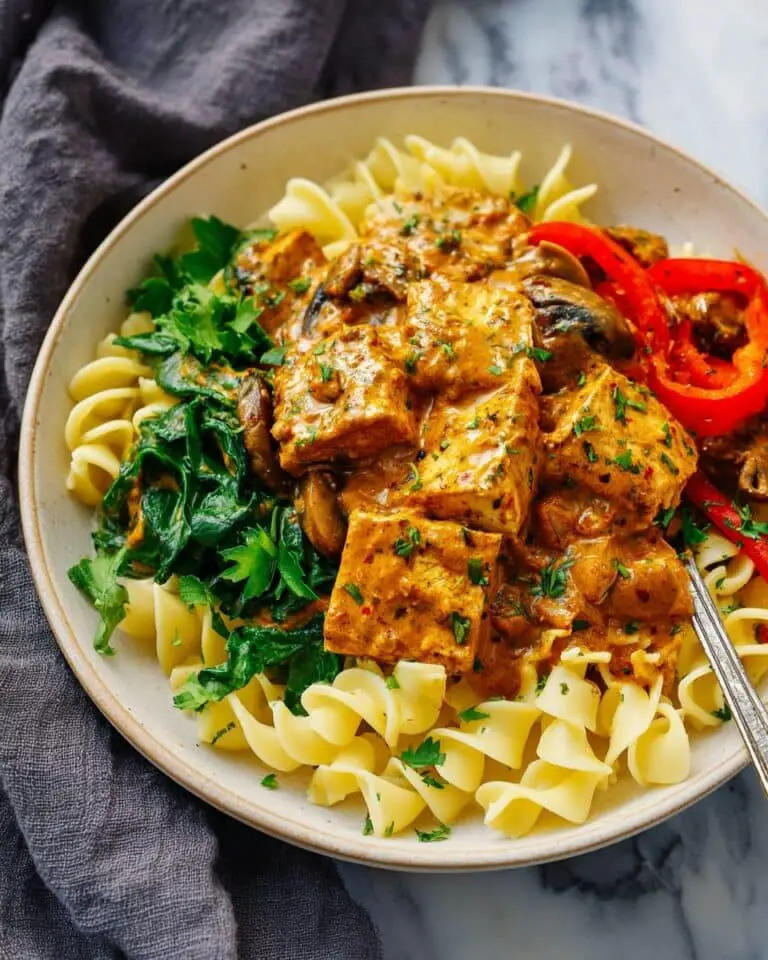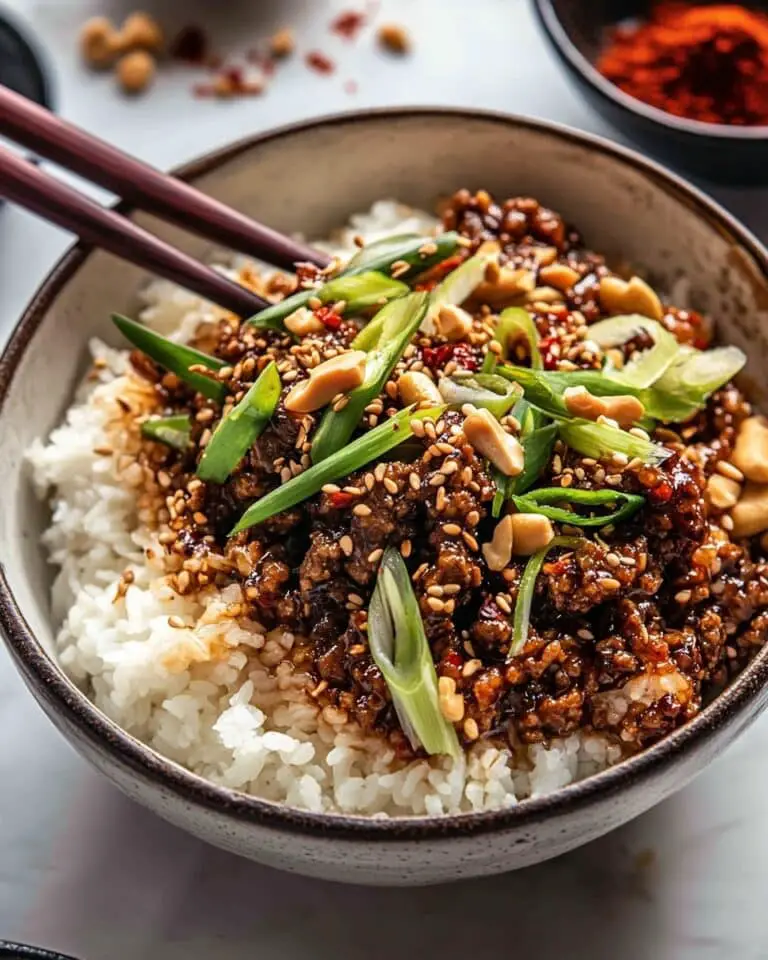If you’re hunting for a show-stopping centerpiece that’s juicy, perfectly cooked, and packed with rich flavor, let me introduce you to this fan-freaking-tastic Reverse Sear Prime Rib Recipe. Trust me, this method is a game changer—it transforms a classic prime rib into a tender, fork-melting feast that’s just begging for seconds. Whether it’s a holiday meal or your next special occasion, stick with me and I’ll guide you through this easy, foolproof process that will absolutely wow your guests.
Why You’ll Love This Recipe
- Consistent Doneness: The reverse sear method guarantees an even, medium-rare center every single time.
- Flavor Packed: That herb butter you slather on? It seeps into the roast, giving layers of savory goodness.
- Juicy & Tender: Slow roasting then searing locks in all those natural juices and a perfect crust.
- Perfect for Entertaining: It’s a crowd-pleaser that looks impressive but is surprisingly low-stress.
Ingredients You’ll Need
I love how this recipe uses simple yet powerful ingredients that really complement the prime rib’s rich flavor—fresh herbs, butter, and just enough seasoning to let that beef shine. When you shop, look for a prime rib that’s well-marbled for the best tenderness and flavor punch.
- Bone-in standing rib roast: Get a 10-pound roast with the bone in for the juiciest, most flavorful results; bones add amazing depth during cooking.
- Kosher salt: Essential for seasoning and drawing out moisture to enhance flavor and texture.
- Butter (softened): Acts as the base for your herb mixture, keeping the meat moist and adding richness.
- Fresh rosemary: Adds a fragrant, piney note that pairs beautifully with beef.
- Fresh thyme: Another fresh herb to brighten the flavor and add complexity.
- Gaby’s Everyday Seasoning: This is my secret weapon—feel free to swap this for your favorite all-purpose seasoning.
- Freshly cracked black pepper: Adds just the right bit of heat and depth to balance the butter and herbs.
Variations
I’ve played around with this recipe quite a bit, and I encourage you to make it your own. Maybe you love a bit more seasoning heat or prefer different herbs—whatever floats your boat! These tweaks keep the recipe exciting and fit your personal taste perfectly.
- Herb Variations: I sometimes swap rosemary and thyme for sage and oregano, which gives a whole new rustic vibe that my family adores.
- Seasoning Swaps: If you like spice, add some smoked paprika or a pinch of cayenne to the butter mixture for a subtle kick.
- Cooking Method: Tried the reverse sear on a smoker with hickory chips once—it added a fantastic smoky layer that takes this prime rib to another level.
- Dietary Mods: For a lower sodium option, reduce kosher salt and load up on fresh herbs instead—flavor remains amazing.
How to Make Reverse Sear Prime Rib Recipe
Step 1: Salt It and Let It Rest Overnight
Start by seasoning your prime rib generously with kosher salt—don’t be shy here because this salt is your flavor backbone. Then cover the roast loosely with plastic wrap and pop it in the fridge overnight. This dry brining step really deepens the flavor and helps develop a great crust later. It might sound like a lot of waiting, but trust me, this patience pays off big time.
Step 2: Bring to Room Temperature and Preheat
The next day, pull your roast out to come to room temperature—this usually takes about an hour. While you’re waiting, preheat your oven (or smoker) to 200°F. This low-and-slow roasting sets the stage for that beautifully even doneness the reverse sear is famous for.
Step 3: Mix Herb Butter and Coat the Roast
In a small bowl, combine your softened butter with the chopped rosemary, thyme, Gaby’s Everyday Seasoning, and freshly cracked black pepper. Smear this aromatic butter all over the roast—don’t hold back because it creates such a luscious crust during the final sear. Place the roast in a large roasting pan ready for the slow cook.
Step 4: Roast Low and Slow Until 115°F
Put the roast in your 200°F oven or smoker and let it cook until the internal temperature hits about 115°F for medium-rare; expect roughly 3½ to 4 hours. This slow roasting gradually brings the temperature up, creating a tender, evenly cooked inside without overcooking the edges. Keep an eye on that thermometer—this step is key for success.
Step 5: Rest and Tent the Roast
Remove the roast and tent it with foil. Resting for around 20 minutes allows the juices to redistribute so every bite stays juicy and tender. It’s hard to wait, but I promise it’s worth it. While you rest, get your cast iron skillet nice and hot for the final sear.
Step 6: The Sear – Flavor’s Grand Finale
Heat a large cast iron skillet over high heat—don’t rush this part; that skillet has to be screaming hot. Carefully place your roast in the skillet, searing each side for 1–2 minutes until you see that gorgeous golden-brown crust form. This quick but intense sear locks in flavor and adds the perfect texture contrast.
Step 7: Final Rest and Serve
Once seared, transfer your roast to a cutting board and let it rest another 3-5 minutes. Then slice off the ribs and cut into ½-inch thick slices. Serve it up and watch your family and friends go crazy for this perfect prime rib—they’ll think you spent all day slaving away when the secret’s really in the chill and the sear!
Pro Tips for Making Reverse Sear Prime Rib Recipe
- Slow and Steady Wins: Resist the urge to crank up the oven temp; cooking low and slow ensures a tender, evenly cooked roast.
- Use a Reliable Thermometer: I swear by a digital instant-read thermometer to nail the perfect doneness every time.
- Don’t Skip Resting: Letting the meat rest after roasting and then again after searing locks in those precious juices.
- Cast Iron for Crust: Cast iron gets mad hot and holds heat well—perfect for building that flavorful sear you want.
How to Serve Reverse Sear Prime Rib Recipe
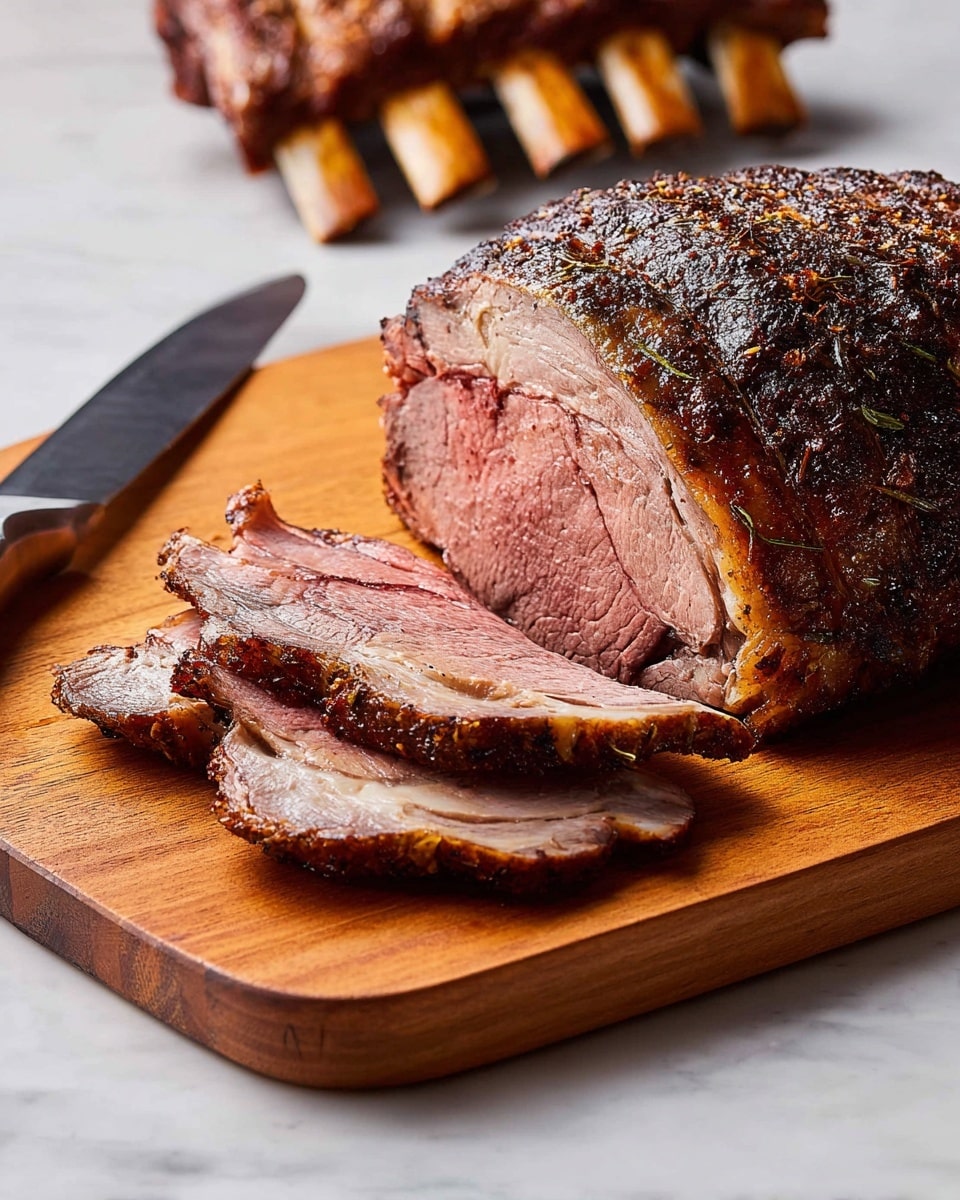
Garnishes
I like to keep garnishes simple and fresh—think sprigs of rosemary or thyme right on the platter for that pop of color and aroma. Sometimes I drizzle a little horseradish cream on the side, which adds a zing that everyone loves.
Side Dishes
My go-to sides are classic roasted garlic mashed potatoes, buttery green beans with almonds, and a crisp Caesar salad. The richness of the prime rib pairs beautifully with these hearty, fresh flavors to round out the meal perfectly.
Creative Ways to Present
For special occasions, I’ve arranged sliced prime rib on a large wooden board surrounded by fresh herbs, roasted baby vegetables, and even placed dipping sauces in small bowls for guests to customize their plates. It makes guests feel like they’re at a gourmet steakhouse right in your dining room!
Make Ahead and Storage
Storing Leftovers
I wrap leftover prime rib tightly in foil and place it in an airtight container before refrigerating. It holds incredibly well for up to 3 days, and each warmed bite still tastes juicy and flavorful.
Freezing
If you want to freeze leftovers, slice the meat first and pack it in freezer-safe bags with as much air removed as possible. Frozen prime rib keeps well for up to 2 months—perfect if you want to enjoy this special roast later with less effort.
Reheating
I gently reheat slices in a low oven (around 250°F) wrapped in foil to preserve moisture. It takes about 15 minutes and keeps the meat tender without drying it out—much better than microwaving, which can toughen those prized cuts.
FAQs
-
What is the reverse sear method and why is it best for prime rib?
The reverse sear method involves low and slow roasting the meat first and then finishing it with a high-heat sear. This technique helps the prime rib cook evenly from edge to center, resulting in a perfectly medium-rare interior while developing a beautiful crust on the outside. It minimizes overcooking and dries out the surface less than traditional searing before roasting.
-
How do I know when my prime rib is done cooking?
Using a reliable instant-read thermometer is the key here. For medium-rare, remove the roast from the oven when it hits around 115°F internal temperature during the slow roast stage because it will continue to rise a bit during resting and searing. This ensures you don’t overcook it and end up with dry meat.
-
Can I do this recipe without a cast iron skillet?
While I highly recommend a cast iron skillet for that perfect, even sear, if you don’t have one, use the heaviest-bottomed pan you own that can handle high heat. Just make sure it gets really hot before searing to get that desirable crust.
-
How long does it take to cook a 10-pound prime rib using this reverse sear recipe?
The low and slow roasting phase usually takes about 3½ to 4 hours at 200°F to reach the target internal temperature of 115°F before searing. Then add about 10 minutes for resting and searing. Keep in mind, times can vary slightly depending on your oven and roast thickness, so always rely on a thermometer.
Final Thoughts
I absolutely love how this Reverse Sear Prime Rib Recipe turns out every time—it’s a foolproof method that takes the stress out of cooking a large roast while delivering restaurant-quality results at home. When I first tried this technique, I was amazed by how tender and flavorful my prime rib became, and since then, it’s been my go-to for holidays and special dinners. Give it a try—I’m sure once you do, you’ll never want to cook prime rib any other way!
Print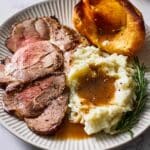
Reverse Sear Prime Rib Recipe
- Prep Time: 10 minutes
- Cook Time: 3 hours 45 minutes
- Total Time: 3 hours 55 minutes
- Yield: 12 servings
- Category: Main Course
- Method: Roasting
- Cuisine: American
Description
This Reverse Sear Prime Rib recipe delivers a perfectly cooked, tender and juicy prime rib roast with a flavorful herb butter crust. Slow-roasted at a low temperature and finished with a high-heat sear, this method ensures an even medium-rare doneness with a deliciously caramelized exterior. Ideal for special occasions and holiday dinners.
Ingredients
Prime Rib Roast
- 10 pound bone-in standing rib roast
- 2 tablespoons kosher salt
Herb Butter Mixture
- ½ cup butter, softened
- 2 tablespoons finely chopped fresh rosemary
- 2 tablespoons finely chopped fresh thyme
- 1-2 tablespoons Gaby’s Everyday Seasoning
- Freshly cracked black pepper, to taste
Instructions
- Season the Roast: Generously season the rib roast with kosher salt. Cover loosely with plastic wrap and refrigerate overnight to allow the salt to penetrate and enhance the flavor.
- Bring to Room Temperature and Preheat Oven: Remove the roast from the refrigerator and let it sit at room temperature while you preheat your oven or smoker to 200°F (93°C) for low and slow roasting.
- Prepare Herb Butter: In a small bowl, combine the softened butter with finely chopped rosemary, thyme, Gaby’s Everyday Seasoning, and freshly cracked black pepper. Mix well to create a fragrant herb butter blend.
- Apply Herb Butter and Roast: Spread the herb butter mixture evenly over the entire surface of the roast. Place the roast in a large roasting pan, then transfer it to the preheated oven or smoker.
- Slow Roast to Temperature: Roast the prime rib at 200°F until the internal temperature reaches 115°F for medium-rare, which typically takes about 3½ to 4 hours depending on your oven and roast size. Use a meat thermometer for accuracy.
- Rest the Roast: Remove the roast from the oven and tent it loosely with aluminum foil. Let it rest for about 20 minutes to allow juices to redistribute, ensuring moist meat.
- Sear the Roast: While the roast rests, heat a large cast iron skillet over high heat until very hot. Carefully transfer the roast to the skillet and sear each side for 1-2 minutes to develop a rich, caramelized crust.
- Final Rest and Slice: Remove the roast from the skillet and let it rest for an additional 3-5 minutes. Remove the ribs, slice the prime rib into ½ inch thick pieces, and serve immediately for best flavor and juiciness.
Notes
- Allowing the roast to come to room temperature before cooking ensures even cooking throughout the meat.
- Using a meat thermometer is crucial for perfect doneness; adjust cooking time according to your preferred level of doneness.
- The herb butter not only adds flavor but also helps achieve a beautiful crust when searing.
- Resting the meat at two stages preserves juices and improves tenderness.
- If you don’t have Gaby’s Everyday Seasoning, you can substitute it with a blend of salt, pepper, garlic powder, and paprika.
- The searing step can be done on a grill if preferred for additional smoky flavor.
Nutrition
- Serving Size: 1 slice (approx. 8 oz)
- Calories: 650
- Sugar: 0g
- Sodium: 700mg
- Fat: 50g
- Saturated Fat: 22g
- Unsaturated Fat: 25g
- Trans Fat: 0.5g
- Carbohydrates: 1g
- Fiber: 0g
- Protein: 45g
- Cholesterol: 140mg

